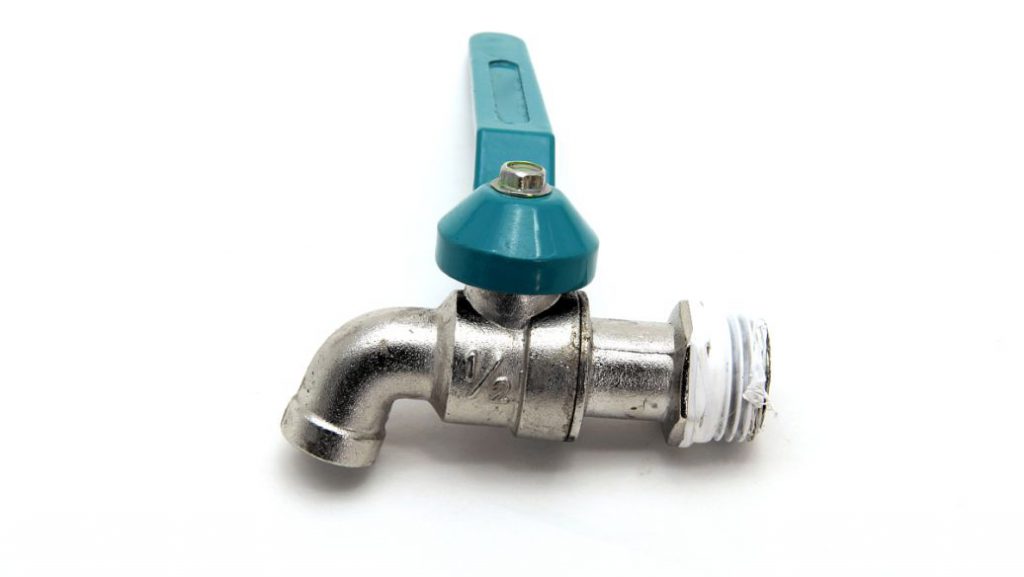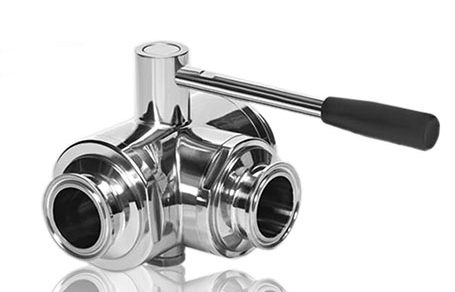How to select the valve body and valve internals material?
Control valves used in an environment above 450 ℃, the maximum temperature of the general material can be used for about 500 ℃. For occasions higher than 538 ℃, the valve body is usually used chromium-molybdenum steel. For the highest temperature up to 1035 ℃ or so, we usually choose SUS310S type stainless steel, and the material carbon content must be controlled between 0.04 ~ 0.08%. For higher temperatures, it is recommended to use a line with non-metallic heat-resistant materials (can be used for high-temperature occasions at 1200 ℃) or special high-temperature resistant high-strength alloy.

The temperature resistance of the filler
Standard Teflon packing can only be used below 200℃, if used in high temperatures, the elongated bonnet must be used to prevent the packing from being affected by extremely high temperatures. However, the longer and thinner valve stems are less strong under high-temperature conditions and are prone to bending. Therefore, flexible graphite packing with excellent temperature resistance (up to 600°C) should be used in high-temperature conditions, which can also greatly reduce the height of the elongated bonnet. At the same time the “rotary class valve thick stem” way to improve the overall strength of the valve, so as to better solve this problem.
The choice of sealing method
In high-temperature conditions to achieve high cut-off performance is very difficult, and many conventional high-performance sealing methods are not desirable (such as O-rings, tetrafluoro materials, resilient metal materials, etc.). Within 500 ℃, a special composite graphite valve seat soft sealing method can be used. In the conditions of regulation above 500 ℃, the difficulty of the high-temperature control valve can only be used metal-to-metal hard seal method (generally using butterfly valve structure).
What are the types of control valves?
Control valves are divided into electric control valves and pneumatic control valves, on a few occasions there are liquid-operated control valves.
How to Maintain Control Valves?
Control valve maintenance generally has two kinds: one is fault maintenance, that is, the regulating valve in case of failure to meet the operating requirements of a series of maintenance work, generally completed in the production plant, special circumstances may also be in the pipeline directly for maintenance. The second is preventive maintenance.
Here we are talking about faulty maintenance.
-
Faulty maintenance.
When the control valve can not operate or can not meet the operating requirements, it means that there is a fault and must be faulty maintenance. In the case of uncertainty about the cause of the failure, generally can be carried out in accordance with the following steps.
-
Cleaning.
After removing the faulty regulating valve from the pipeline, the first step in the repair work is to thoroughly clean the regulating valve. Control valves are easily contaminated by the process fluid, if the process medium is corrosive, explosive, radioactive, it is harmful to the human body, must be cleaned by a special method to the process-soaked parts. Cleaning methods vary with the process medium nature. In general, as long as the water or steam blow can be, for some pollution, such as alkaline media to use the acid cleaning method, the pollution of heavy metals should be in high temperature, a long time for special treatment. Cleaning to avoid repeated pollution, is to be carried out in a safe place. All cleaning tools containers, heating equipment, steam hoses, washing equipment, etc. should be prepared in advance.
-
Disassembly of regulating valves.
Disassembly of the regulating valve should be marked with the valve body corresponding to the connection position of the actuator, the actuator and the upper valve cover separate, the upper valve cover and the valve body separate, disassemble the upper valve cover and stuffing box parts, from the valve body can be removed from the spool, stem, and other parts. All disassembled parts and components must be carefully inspected in order to determine the need for repair and replacement parts.
Usually, after the disassembly of the regulating valve, the following parts should be focused on during the inspection.
1) The inner wall of the valve body.
Check its pressure and corrosion resistance.
2) Valve seat.
Because of the infiltration of the medium, the surface of the thread used to fix the valve seat is susceptible to corrosion and makes the seat lose, for high-pressure occasions, should also check the corrosion or damage to the sealing surface of the seat, of course, now some structures, the seat and the valve body is not threaded connection, but with high-temperature dense regulating valve troublesome repair points seal parts must focus on inspection.
3) spool.
To carefully check whether the various parts of the spool are corroded or worn, especially in the case of high-pressure difference spool wear more serious, in addition to the valve stem should also check whether there is a similar situation and whether the connection with the spool is loose, etc.;.
4) sealing packing and gasket.
Check whether the sealing packing and gasket are aging, cracked, etc., and whether the mating surface is intact.
-
Disassembly of the actuator.
After disassembling the actuator, we should check carefully the bracket, diaphragm, spring, push rod and threaded connection, etc. Among them, the bracket is a force member and cannot be cracked; the diaphragm is a key component and cannot be damaged or aged; the spring cannot be cracked. For the multi-spring actuator, as long as one of the springs is damaged, the performance of the whole actuator will be seriously affected. No matter what kind of parts, once they are corroded or rusted, it is better to replace them with new parts.
-
Align and tighten evenly to prevent flange leakage.
The torque load of the bolt or double-headed bolt is related to its size, and it is not allowed to be tightened too much. The type, quantity, and installation method of packing directly affect the sealing performance and should not be taken lightly when assembling. After reassembling the actuator, also apply a suitable lubricant to each friction part, these parts include valve stem and guide parts, actuator push rod and guide parts, bearings, transmission parts, adjusting nuts, etc.
-
Testing.
After reassembly, the regulating valve must be tested, such as the test of basic performance, the test of air tightness, the test of leakage volume, etc. The test can be sent to the site for installation only after passing.




Recent Comments